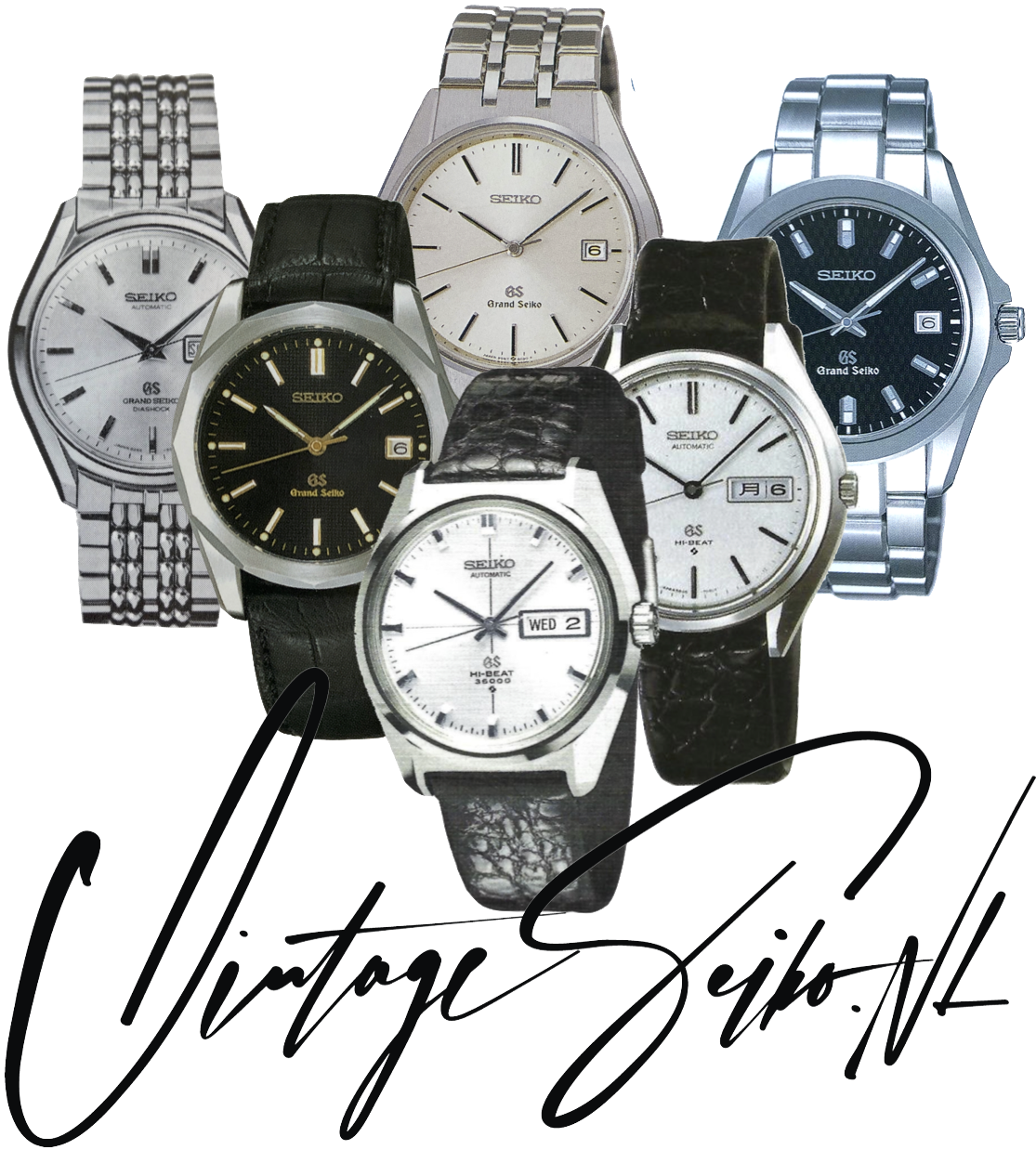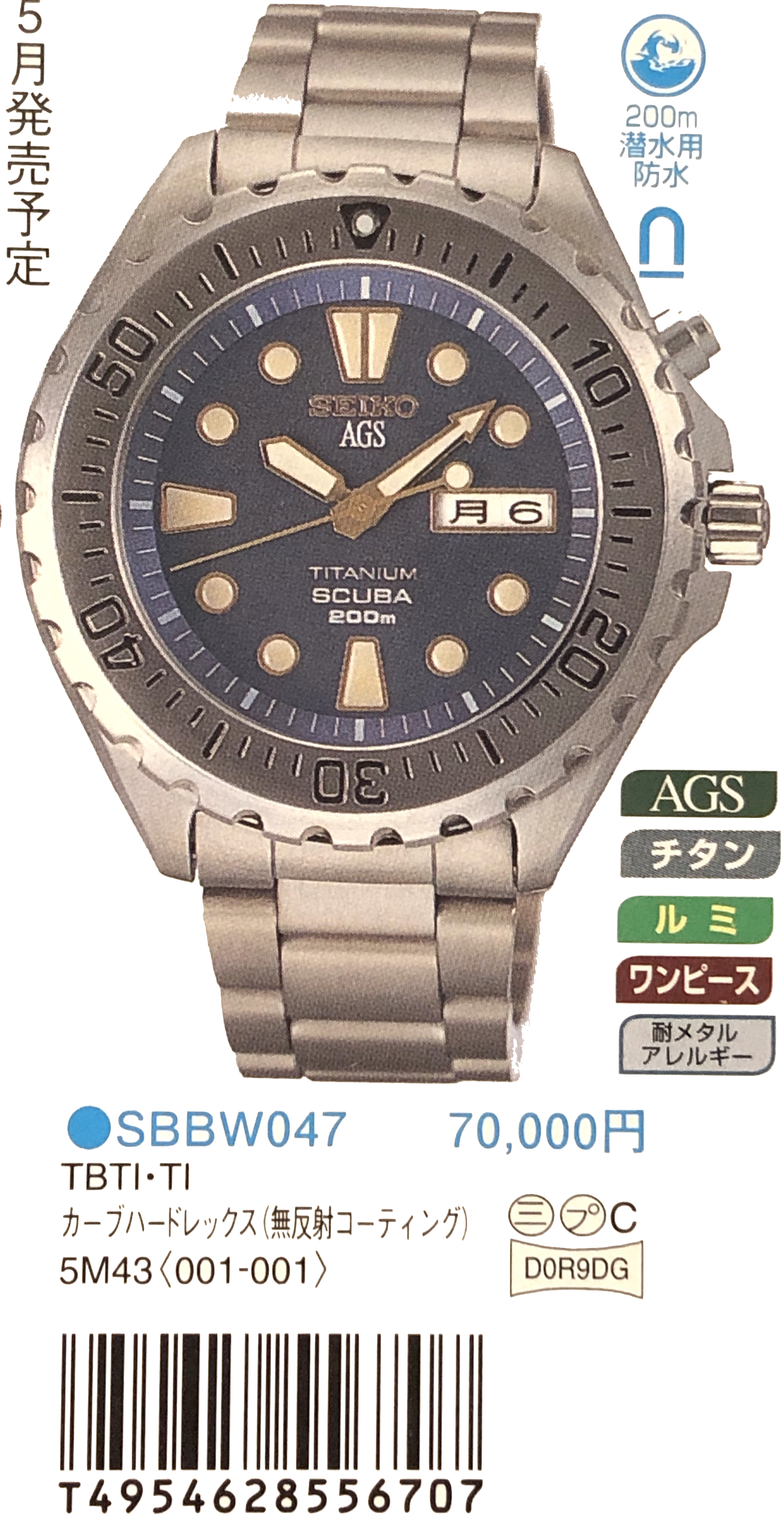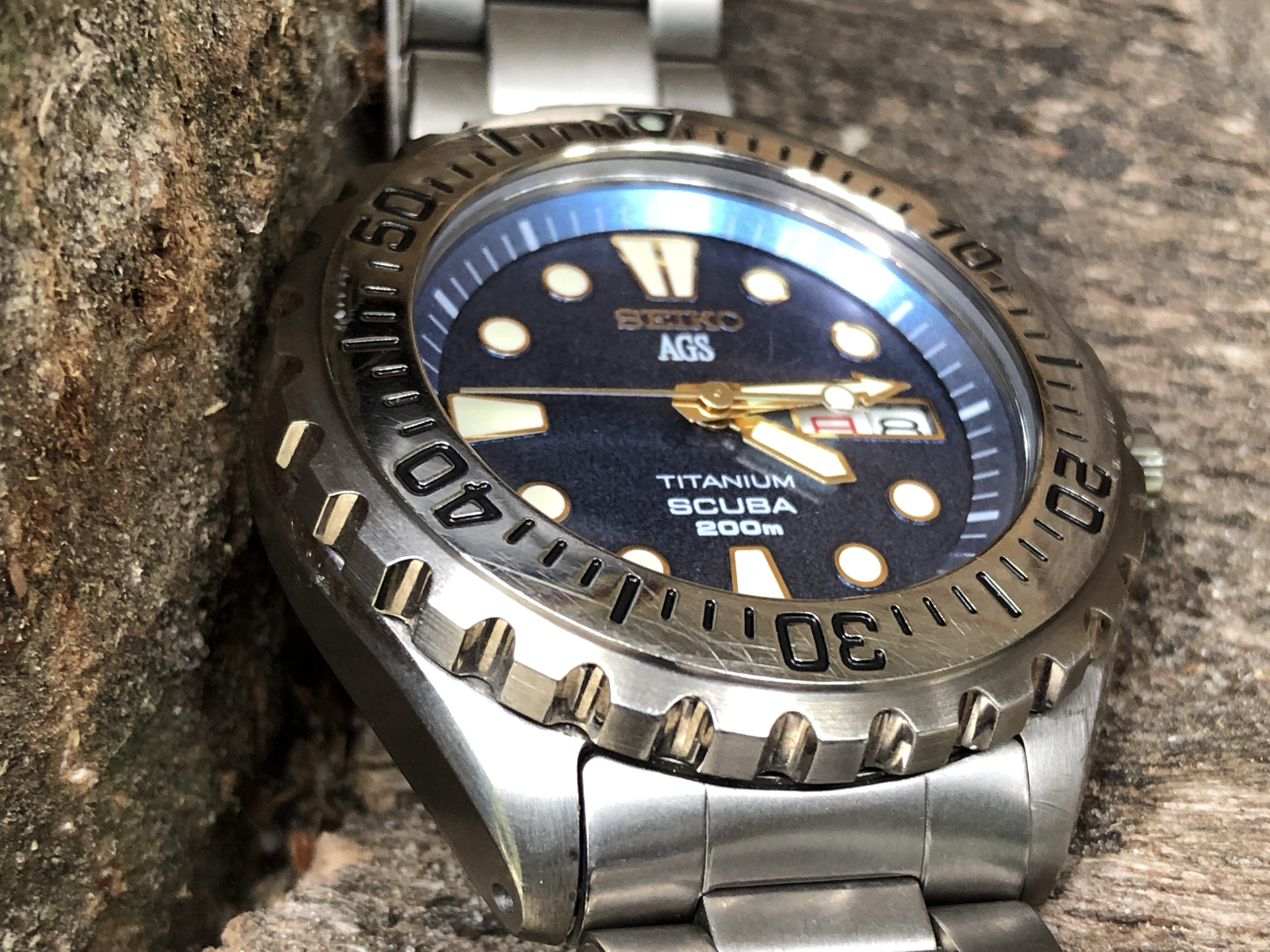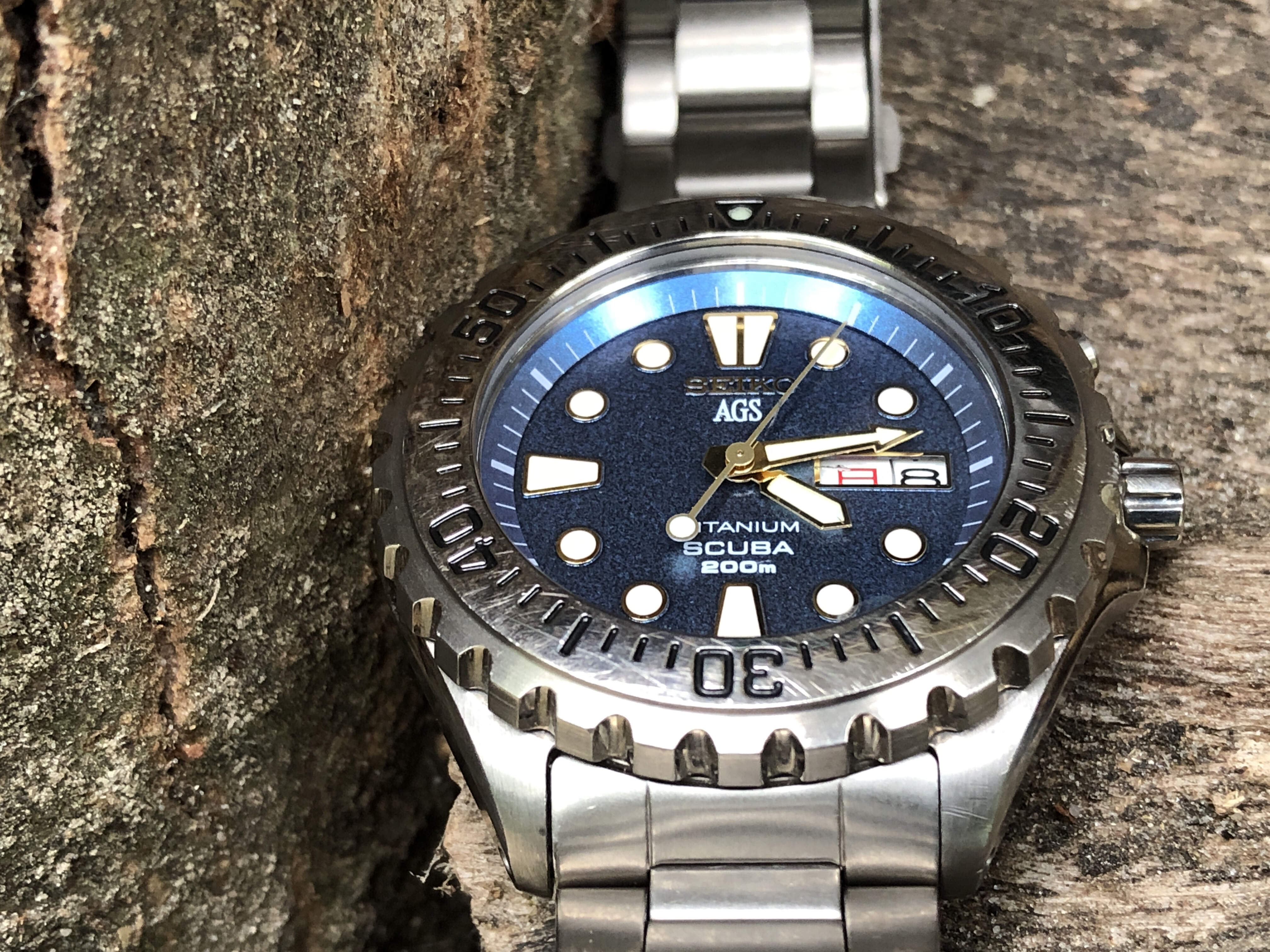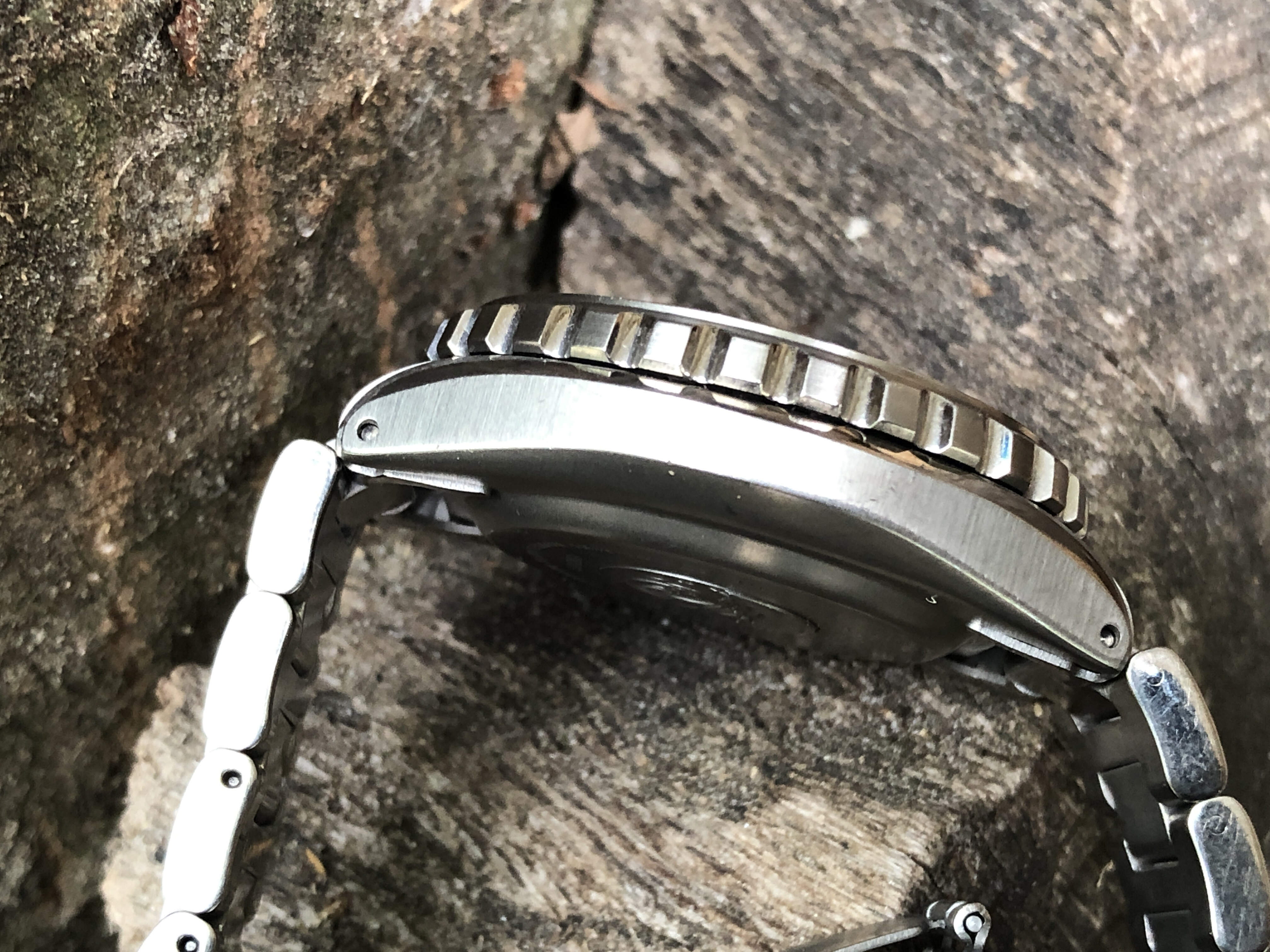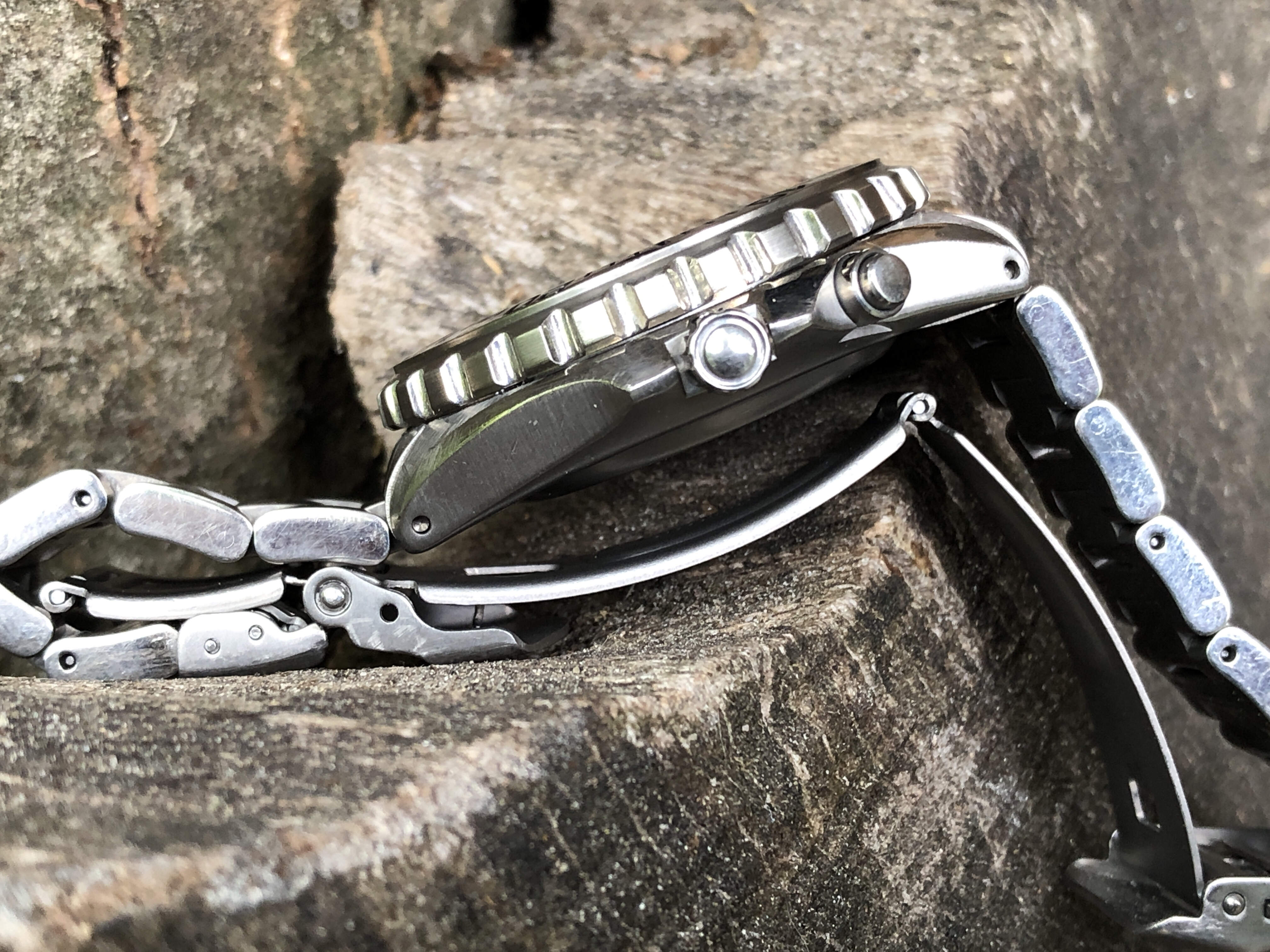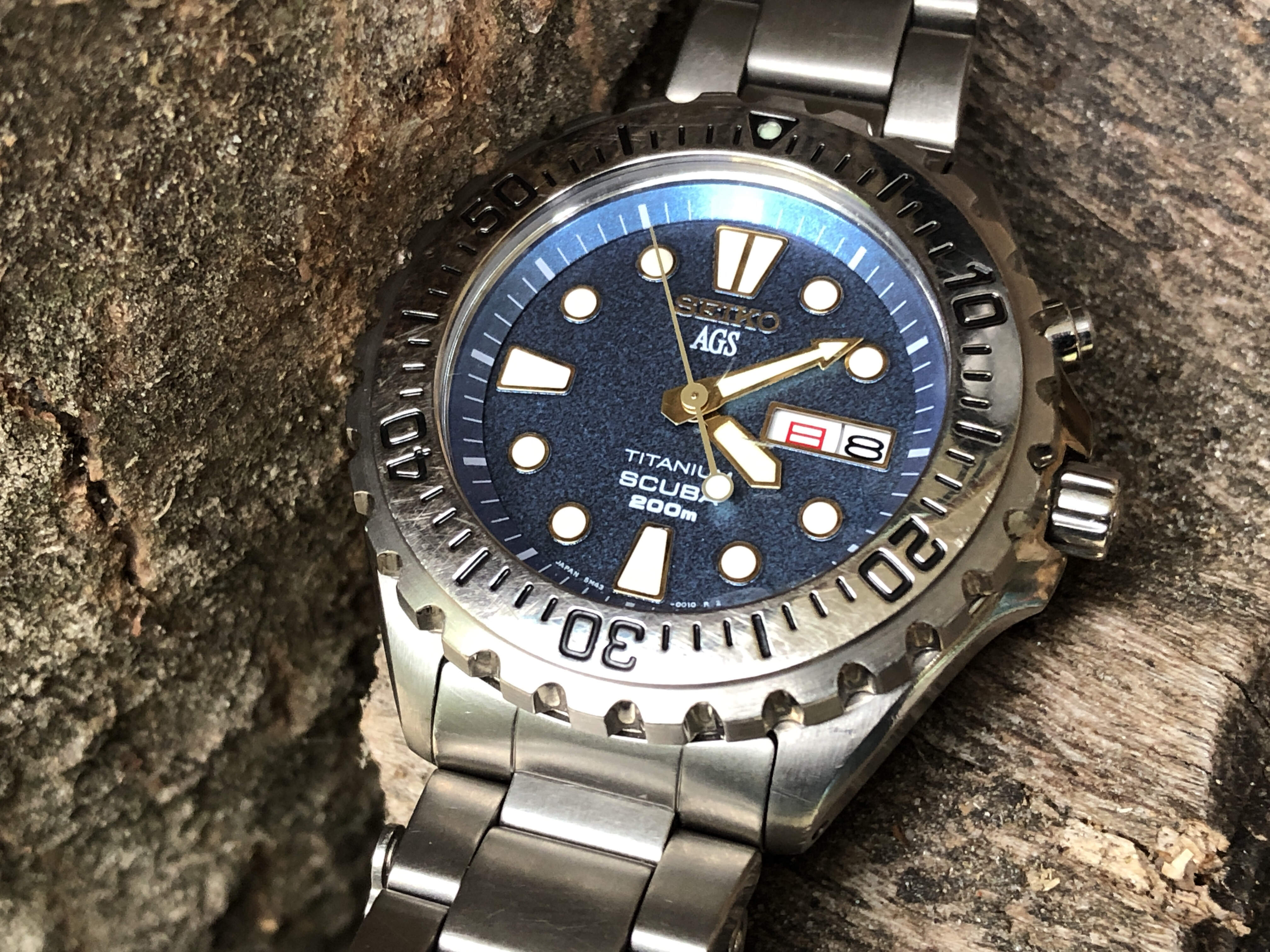
Seiko Scuba Titanium 5M43-0010 Blue starlight (Sold)
€ 485.00
Sold out
| Manufacture | Seiko |
|---|---|
| Model | Scuba |
| Reference | 5M43 0010 (SBBW047) |
| Movement | AGS |
| Serial No. | 62XXXX |
| Case | Titanium, Classic design 40x46x13 |
| Crystal | Hardlex |
| Dial | Blue starlight |
| Bracelet | Titanium, 19cm around |
| Lugs | 19mm |
| Production | 1996-02 |
| Condition | Very good |
| Service | New (6 months) capacitator 06-2019, waterproof tested 5bar (50m) |
| Box | No |
| Papers | No |
This watch is a Seiko Kinetic anti-allergic full titanium 200m monobloc diver's watch with tri-fold double push button clasp. Lumibrite indices behind a domed Hardlex glass with internal non reflective coating.
The Seiko AGS, or the automatic generating system, was actually introduced in Germany in January of 1988. It was the world's first quartz watch to be equipped with an automatic power generating system. An ultra-compact power generator was built in, so the AGS had no battery that needed replacing. Introduced at a time when global ecological issues were in the public eye, the AGS was spotlighted as a groundbreaking watch that would launch a new era of quartz timepieces.
Quartz watches employed drive systems that relied on battery power- and batteries require periodic replacement. This reliance on batteries was an issue from the start of quartz watch development, as there were concerns about issues such as the watches' practicability in regions where batteries would be difficult to obtain and the disposal of used batteries. Since the advent of the quartz watch, Epson had been casting about for and researching a variety of drive systems as it labored to develop a product that would overcome these obstacles. During this effort the company put much of its weight behind developing a watch with an automatic power generating system, one that would merge an automatic-winding drive system with the accuracy of a quartz system. A full-blown development effort that got under way in 1983 culminated in the successful development of the world's first automatic power-generating watch, a timepiece with timekeeping circuits driven by power generated by the movement of the wearer's arm.
The AGS that came out of this effort won wide acclaim in the United States and Europe, where interest in global environmental conservation was especially high. In April 1988 the watch went on sale in Japan under the name Seiko Auto-Quartz. In 1997 the name of the mechanism was for most models changed from AGS to Kinetic to emphasize the convenience of a mechanism that uses the natural movement of the wearer's arm to generate power. Under either name, the AGS mechanism became one of the main models of Seiko wristwatches and is used in a great many different watch products. And it's not only used in watches. This automatic power-generating system has also been used in a diverse range of other applications.
